Practices to lessen impacts should begin at the design phase
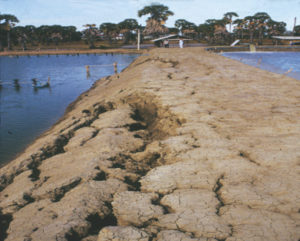
Sediment in earthen ponds originates primarily from two sources: a high concentration of suspended solids in the water supply and erosion of pond bottoms and embankments. Because erosion and sedimentation are common, aquaculturists tend to consider them the norm and devote little attention to ways of lowering the rates at which embankments erode and sediment accumulates in deeper areas of ponds.
Erosion degrades embankments, and excessive sediment in ponds reduces depth, creates a soft bottom, makes harvesting more difficult and damages benthic plant and animal communities. Suspended soil particles in ponds increase turbidity and thereby reduce light penetration for phytoplankton photosynthesis. High levels of suspended solids in effluents are pollutants.
Pond construction
The implementation of practices to lessen external inputs of suspended soil particles to ponds and minimize internal erosion should begin at the design and construction stages. Embankments should have sufficient side slopes to resist erosion. Table 1 gives recommended side slopes for different types of soil.
Boyd, Recommended side slopes, Table 1
| Soil Type | Side Slope (horizontal: vertical) |
|---|---|
| Clay, clay sand, sandy clay, silty sand | 3:1 wet side |
| Clay, clay sand, sandy clay, silty sand | 2:1 dry side |
| Silty clay | 3.1 wet side |
| Silty clay | 3.1 dry side |
| Well-graded soil | 1:1, 2:1 wet side |
| Well-graded soil | 1:1, 2:1 wet side |
Although most references on pond construction suggest that a high percentage of clay in fill for pond embankments is desirable, heavy clay soil material does not bear loads well and is difficult to compact. Steeply sloped embankments with high clay content may slip, encouraging severe erosion. A well-graded soil with less clay and a wide range in particle size distribution is best suited for embankments.
Fill material should be thoroughly compacted, which requires that fill be near the optimum moisture content for compaction. A laboratory procedure known as the standard Proctor test can measure the optimum moisture content of a soil for compaction to 95 percent of maximum density. It often is not possible to use this procedure for pond construction, but the following guidelines can be helpful.
Typical optimum moisture contents for good compaction of common types of soil are: sandy materials, 6 to 10 percent; silty sand, 8 to 12 percent; silt, 11 to 15 percent; clay materials, 13 to 21 percent. Fill material should be installed in 15- to 20-cm layers and compacted before the next layer is applied. Water should be added to dry soil to increase moisture and enhance compaction.
Stone, riprap rock or gabion can be installed below the water line to control erosion. Grass cover should be used above the water line on the wet side and on the dry side to control erosion. If the top of the embankment is not covered with gravel, it also should be covered with grass.
Canals constructed to convey water to ponds also should be designed with consideration for erosion control. The minimum side slopes (horizontal to vertical) and maximum allowable water velocities for avoiding erosion in canals of different depths are provided in Table 2.
Boyd, Allowable side slopes, Table 2
| Soil Type | Side Slope (horizontal: vertical) | Maximum Water Velocity (m/second 1.0 m deep | Maximum Water Velocity (m/second 1.5 m deep | Maximum Water Velocity (m/second 2.0 m deep |
|---|---|---|---|---|
| Sandy loam | 3.0 | 0.77 | 0.84 | 0.89 |
| Silty clay | 3.0 | 0.97 | 1.05 | 1.11 |
| Silty sand | 2.0 | 0.97 | 1.05 | 1.l1 |
| Stiff clay | 1.5 | 1.35 | 1.47 | 1.55 |
Water supply, embankments
The water supply for ponds should be examined to determine if it is a significant source of suspended solids. Erosion on small catchments for “watershed” ponds can be a major source of suspended solids. Denuded areas on catchments should be covered with grass or other vegetation. Sometimes it is possible to construct ditches or terraces in critical areas to divert turbid runoff from ponds.
The embankment ponds most commonly used in aquaculture are filled with water from streams, canals, estuaries or other water bodies that can be high in suspended solids concentrations. Turbid water should be held in a settling basin before being transferred to farm canals and ponds. Failure to do so can lead to excessive sedimentation. A settling time of four to eight hours will remove most of the coarse solids, but fine silt and clay particles often remain in suspension.
Erosion on the dry side of embankments and above the waterline on the wet side as a result of wind and rain can be minimized in ponds that were constructed with inadequate side slopes by installation of grass cover or other erosion-resistant cover.
Mechanical aeration
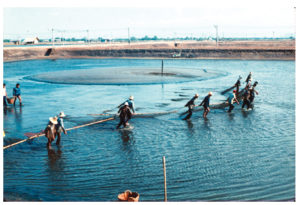
The mechanical aeration used in many ponds generates water currents that can cause severe erosion of pond embankments and bottoms, and sediment accumulation on pond bottoms. Aerator-related erosion becomes more severe as the amount of aeration increases, but at moderate levels of aeration up to about 20 hp/ha, improved practices can minimize erosion.
These practices include placing aerators in water over 1 meter deep, installation of aerators beyond the inside toes of embankments – usually about 6 meters from the water’s edge, and prevention of aerator-generated water currents from impinging on embankments.
Sediment can be removed from ponds to restore pond bottoms to near-original condition. This sediment should be used to repair erosion on insides of embankments when possible. It is particularly important to thoroughly compact the repaired areas and reinforce them against erosion.
Liners
At higher aeration rates, some type of liner should be installed to protect earthwork from aerator-generated currents. Lining also protects pond bottoms from erosion caused by culture species that stir up the bottoms of ponds in search of food or for building nesting sites.
The most effective approach is to completely line ponds with plastic membranes, but this method is very expensive and causes aberrations in water quality. In particular, the adsorption of phosphorus from water by soil is prevented by the liner, and dense phytoplankton blooms occur. These blooms tend to “bloom and crash,” making the pond environment unfavorable for aquaculture. Of course, completely lined ponds can be used for heterotrophic, biofloc-based aquaculture, but most producers have not adopted this super-intensive culture method.
Partial lining of erosion-vulnerable areas in ponds with plastic or geofabric is a cheaper alternative than complete lining of ponds. There is evidence from recent research at Auburn University that relatively inexpensive, permeable geofabric liners allow exchange of phosphorus and other dissolved and gaseous substances between bottom soil and water. Such liners can prevent erosion in ponds without interfering with water quality. However, several issues – expected service life, a tendency for the fabric to float and optimum fabric opening size – remain to be resolved before this material can be recommended for general use.
Erosion prevention in ponds has the added benefit of reducing concentrations of suspended solids in water and therefore in pond effluents. Aquaculturists participating in eco-label certifications such as the Best Aquaculture Practices program may find that an investment in erosion control can avoid the necessity for constructing an effluent settling basin for compliance with a limit on total suspended solids concentration.
(Editor’s Note: This article was originally published in the January/February 2011 print edition of the Global Aquaculture Advocate.)
Now that you've reached the end of the article ...
… please consider supporting GSA’s mission to advance responsible seafood practices through education, advocacy and third-party assurances. The Advocate aims to document the evolution of responsible seafood practices and share the expansive knowledge of our vast network of contributors.
By becoming a Global Seafood Alliance member, you’re ensuring that all of the pre-competitive work we do through member benefits, resources and events can continue. Individual membership costs just $50 a year.
Not a GSA member? Join us.
Authors
-

Claude E. Boyd, Ph.D.
Department of Fisheries and Allied Aquacultures
Auburn University
Auburn, Alabama 36849 USA[117,100,101,46,110,114,117,98,117,97,64,49,101,99,100,121,111,98]
-
Puttitorn Saengrungruang
Department of Fisheries and Allied Aquacultures
Auburn University, Alabama, USA
Tagged With
Related Posts
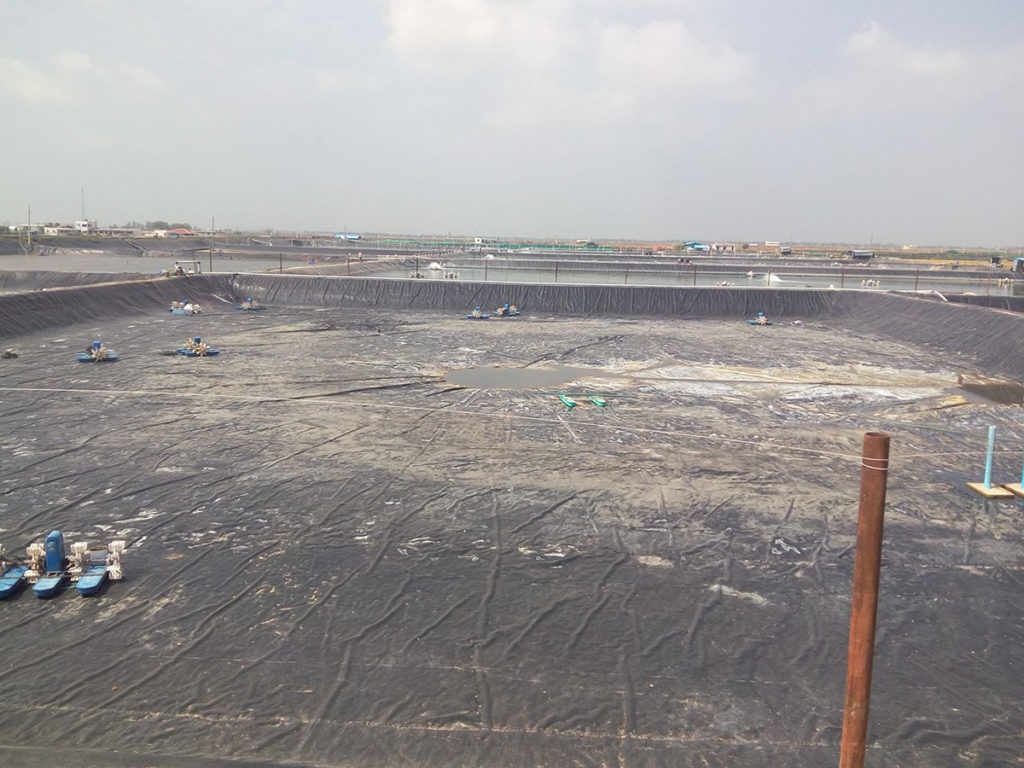
Responsibility
Appraising pond liners for shrimp culture
The use of plastic-lined ponds by shrimp farmers can significantly improve production efficiency, support more production cycles per year, and higher mechanical aeration rates and stocking densities. The capital cost of lining ponds can be very significant, so a thorough feasibility analysis is recommended when considering this production tool.
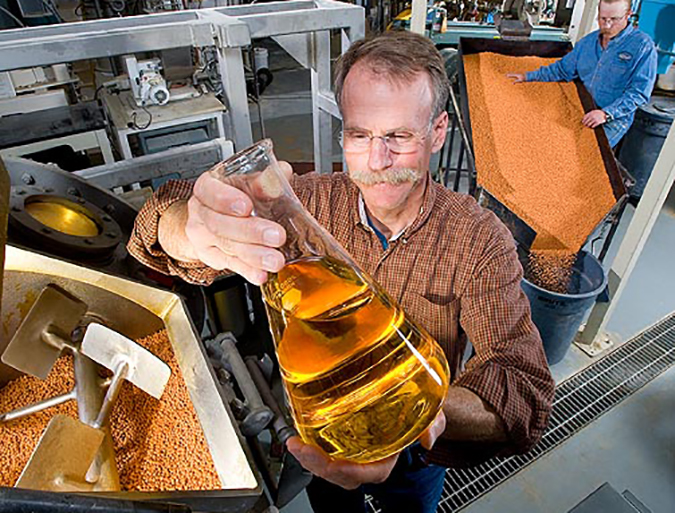
Aquafeeds
Aquaculture Exchange: Rick Barrows
After 14 years with the USDA’s Agricultural Research Service, Rick Barrows talks about the importance of finding ‘complete’ and commercially viable alternative sources of omega-3 fatty acids and continuing innovation in the aquafeed sector.
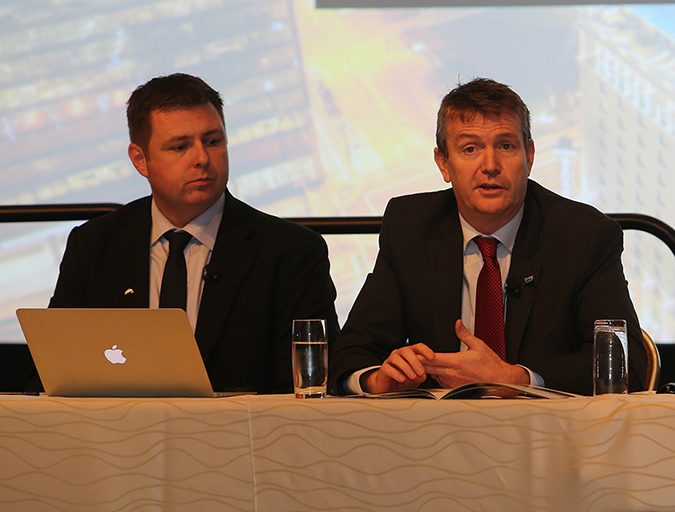
Health & Welfare
BC salmon farmers vow sea lice transparency
At the recent GOAL conference, the British Columbia Salmon Farmers Association committed to reveal sea lice counts at farms operating in the province while promising a future without antibiotics, despite struggles with the persistent yellow mouth disease.
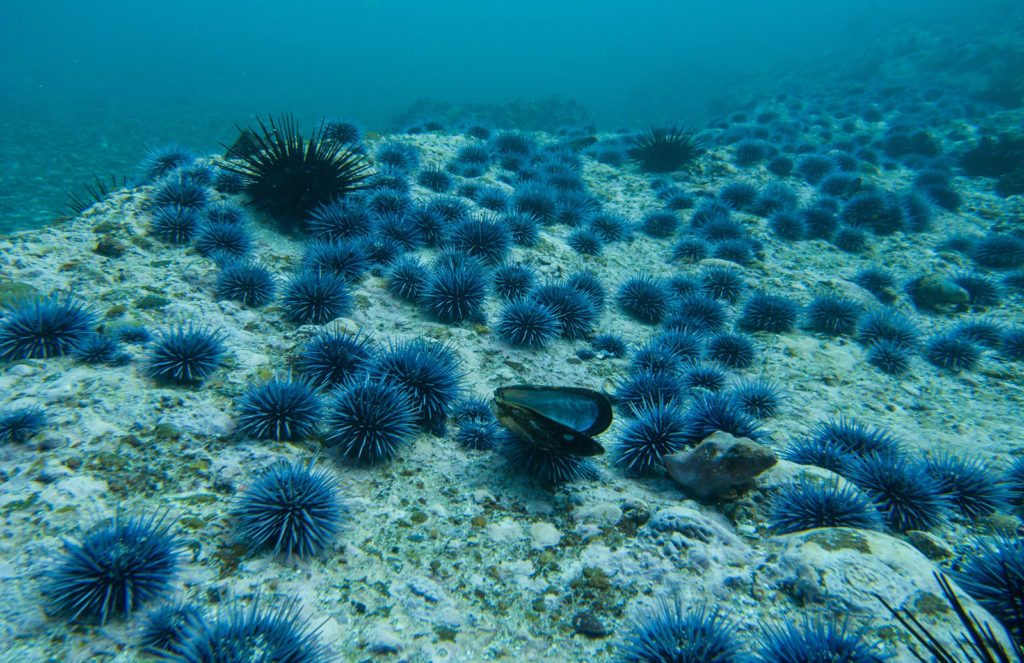
Responsibility
Can ranching ‘zombie urchins’ boost uni, save kelp forests?
With Norwegian knowledge and a partnership with Mitsubishi, Urchinomics aims to turn worthless empty urchins into valuable seafood while restoring kelp forests and creating jobs.



